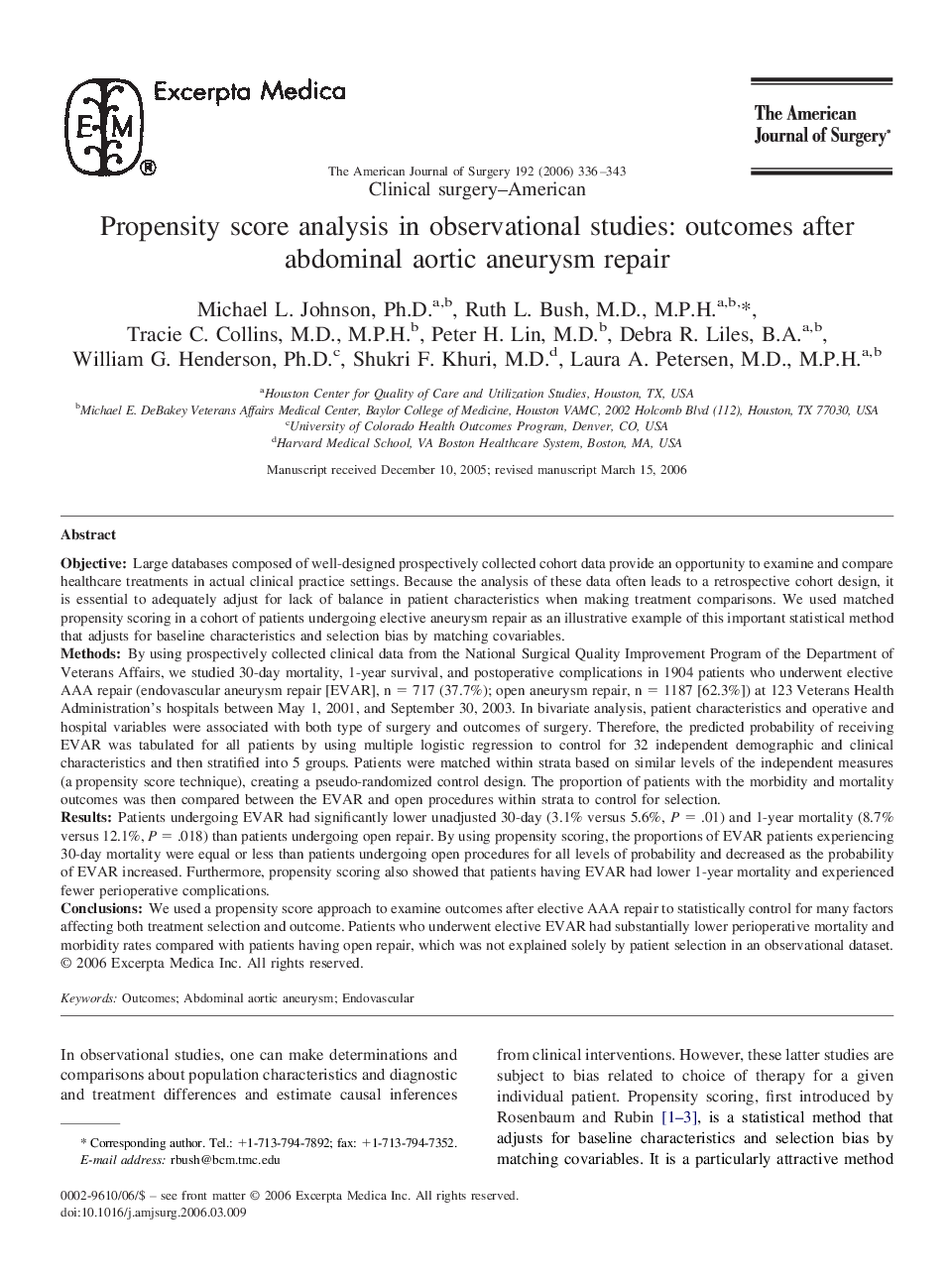| کد مقاله | کد نشریه | سال انتشار | مقاله انگلیسی | نسخه تمام متن |
|---|---|---|---|---|
| 4281930 | 1611602 | 2006 | 8 صفحه PDF | دانلود رایگان |

ObjectiveLarge databases composed of well-designed prospectively collected cohort data provide an opportunity to examine and compare healthcare treatments in actual clinical practice settings. Because the analysis of these data often leads to a retrospective cohort design, it is essential to adequately adjust for lack of balance in patient characteristics when making treatment comparisons. We used matched propensity scoring in a cohort of patients undergoing elective aneurysm repair as an illustrative example of this important statistical method that adjusts for baseline characteristics and selection bias by matching covariables.MethodsBy using prospectively collected clinical data from the National Surgical Quality Improvement Program of the Department of Veterans Affairs, we studied 30-day mortality, 1-year survival, and postoperative complications in 1904 patients who underwent elective AAA repair (endovascular aneurysm repair [EVAR], n = 717 (37.7%); open aneurysm repair, n = 1187 [62.3%]) at 123 Veterans Health Administration’s hospitals between May 1, 2001, and September 30, 2003. In bivariate analysis, patient characteristics and operative and hospital variables were associated with both type of surgery and outcomes of surgery. Therefore, the predicted probability of receiving EVAR was tabulated for all patients by using multiple logistic regression to control for 32 independent demographic and clinical characteristics and then stratified into 5 groups. Patients were matched within strata based on similar levels of the independent measures (a propensity score technique), creating a pseudo-randomized control design. The proportion of patients with the morbidity and mortality outcomes was then compared between the EVAR and open procedures within strata to control for selection.ResultsPatients undergoing EVAR had significantly lower unadjusted 30-day (3.1% versus 5.6%, P = .01) and 1-year mortality (8.7% versus 12.1%, P = .018) than patients undergoing open repair. By using propensity scoring, the proportions of EVAR patients experiencing 30-day mortality were equal or less than patients undergoing open procedures for all levels of probability and decreased as the probability of EVAR increased. Furthermore, propensity scoring also showed that patients having EVAR had lower 1-year mortality and experienced fewer perioperative complications.ConclusionsWe used a propensity score approach to examine outcomes after elective AAA repair to statistically control for many factors affecting both treatment selection and outcome. Patients who underwent elective EVAR had substantially lower perioperative mortality and morbidity rates compared with patients having open repair, which was not explained solely by patient selection in an observational dataset.
Journal: The American Journal of Surgery - Volume 192, Issue 3, September 2006, Pages 336–343